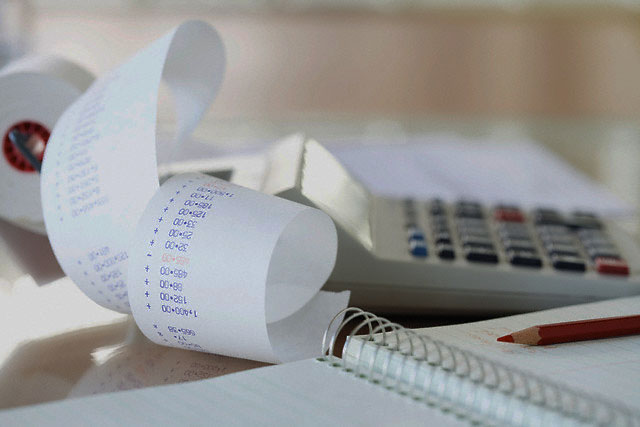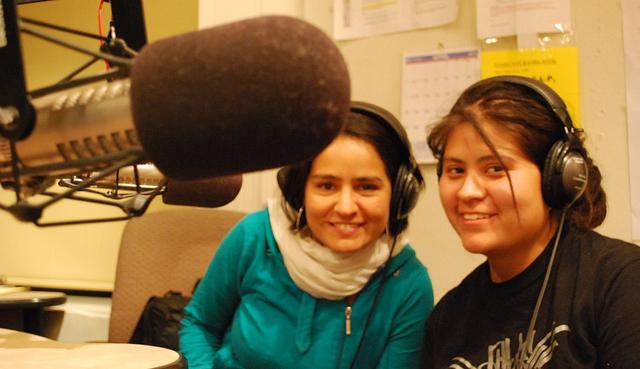Expenses to Expect
 One of the absolutely beautiful things about Low Power FM radio is how cheap it is. Many stations get on the air for under $20,000 and can stay on the air for less than a few thousand dollars per month. The main start-up expenses for a radio station are engineering fees, studio equipment for producing radio shows, and transmitting equipment for sending your signals out to the world. The main recurring costs are rent, utilities, and personnel.
One of the absolutely beautiful things about Low Power FM radio is how cheap it is. Many stations get on the air for under $20,000 and can stay on the air for less than a few thousand dollars per month. The main start-up expenses for a radio station are engineering fees, studio equipment for producing radio shows, and transmitting equipment for sending your signals out to the world. The main recurring costs are rent, utilities, and personnel.
Note: This guide covers LPFM (Low-Power FM) radio stations in the United States only, and while this information could be useful for other types of stations requirements will vary.
Start-Up Expenses
Application
The good news is that there’s no application fee for LPFMs! However, you may need expert help to fill out the application, like an FCC allocations engineer and possibly an attorney. If you have a fairly good understanding of how radio allocations are made, and there’s a clearly available frequency (*** Link to RFree) in your area, then you may be able to apply on your own with our free tools and resources. But if you want someone to double-check your work, or if you’re having trouble finding an available frequency, it may be worth it to hire an engineer. The legal section of the LPFM application requires information about your nonprofit organization and board of directors, and you may need to obtain legal advice if you have a specific questions or special considerations.
Engineering Fees
While some stations may be able to get on the air without a paid engineer, most will need to pay an engineer somewhere along the way. Radio stations can benefit from technical expertise of many different kinds, including IT skills, digital and analog audio skills, and of course RF (radio frequency) skills. When you are just starting the LPFM application, the first kind of technical help you need An engineer who is experienced with FCC allocations and filings can help you find a frequency and prepare an application for between $500 and $3,000. You will need on the ground assistance from an experienced broadcast engineer to plan and install FM radio antenna, transmitter, and studio equipment. On the other hand, you can probably get most of the help you need with your studio from an audio engineer (like someone who runs a recording studio), or even an enthusiastic hobbyist who has some background in audio systems and is willing to do a bit of research.
Studio Equipment
A studio can be put together primarily with donated our used equipment. A cheap studio set up using consumer grade audio gear can cost as little as $5,000, depending how much you scavenge and how picky you are. If you opt for top-of-the-line new equipment, it is easy to spend upwards of $100,000! The one thing that almost always has to be bought new is the emergency alert system (EAS), which monitors the airwaves for emergency alerts and rebroadcasts them on your station. The FCC requires every station to have this, and it costs around $3,000 for a fully-compliant EAS. It is hard to find a used EAS because radio stations rarely replace them. Aside from the EAS, consumer grade studio equipment is perfectly adequate when you are starting out and short of cash. It is generally a little noisier, less convenient to use and will break much quicker than good professional machinery. If you are putting things together on a shoestring, the pro-gear can wait. On the other hand, it is often easier to fundraise for start-up expenses than maintenance. Try to look at the skills of your volunteers and evaluate whether your group will be more skilled at fundraising from listeners after you start up or winning big grants before you start.
Some stations have a second “production” studio in addition to their main studio. This allows one person to pre-record material while another person is doing a live broadcast. A production studio is by no means essential, but will make station operation much smoother. Production studios require a bit less equipment than on-air studios.
It is so easy to produce audio with just a computer, a decent “podcast” microphone, and free audio-editing software, that some stations do not build a studio! Instead they produce audio wherever it is convenient and upload it to a computer which puts it on the air at the right time.
 Transmission Equipment
Transmission Equipment
Depending on your ambitions and the complexity of your transmission site, you could spend $15,000 to $50,000 or more on construction — equipment and contractors. Most stations with simple antenna/tower designs can get on the air for less than $20,000. A transmitter, antenna, and associated equipment usually cost at least $5,500 for a FCC-accepted LPFM transmitter and a really cheap antenna installed yourself. Transmitting (and emergency-alert) equipment is harder to scavenge than studio equipment because the FCC has special rules about what transmitting equipment a licensed LPFM station can use. Wait until you have a Construction Permit from the FCC before buying this equipment.
If you build your own tower, figure a minimum of $1000 to build the cheapest DIY 50′ setup with an inexpensive antenna, but such a setup may not be permitted by local zoning especially in hurricane areas. In a rural area with few if any permits, electricity already on site, and volunteers/friends who can do most of the labor, you might build an engineered 100′ tower with your antenna for $15,000. In or near a moderate-to-large city especially in hurricane alley? Double or triple that cost. The steel is often not the big expense, and you might consider paying a little more for a heavier tower so you can rent vertical real-estate to other radio and cell-phone folks to offset your operating expenses, but make sure you have someone who knows the market and how to manage the rental agreements and facility.
Visit our Transmission Resources (*** update ) page for additional information.
Recurring Expenses
Rent and Utilities
You may need to rent studio space, but it is worth asking around for a local group that will donate a room or more to you. Having a radio station inside is a big draw for a community center, public access TV station, or other institution, or business, that likes to have a lot of people coming through. If you can’t put your antenna on the roof of your studio, you may also need to rent space at a dedicated transmitter site. Both the studio and transmitter will need electricity, and the studio will probably need internet and phone connections.
People Power
 Many stations get by on volunteers exclusively. However, in many cases stations may want to hire part-time or even full-time staff to keep the office running smoothly. This is largely a matter of your organization’s operating philosophy. If paid staff are desired, figure out how much (or little) they will work for and make this a part of your operating budget. Tasks that may require paid services include volunteer coordination and training, accounting, fundraising, FCC compliance and general record keeping.
Many stations get by on volunteers exclusively. However, in many cases stations may want to hire part-time or even full-time staff to keep the office running smoothly. This is largely a matter of your organization’s operating philosophy. If paid staff are desired, figure out how much (or little) they will work for and make this a part of your operating budget. Tasks that may require paid services include volunteer coordination and training, accounting, fundraising, FCC compliance and general record keeping.
Content Licensing
If you play any content on the air that is licensed, you’ll need to pay licensing fees. Licensing fees are paid to Performance Rights Organizations (PROs) that in turn pass on money to artists and composers. Licensing fees for LPFMs are generally around (******)/year, with additional fees if you stream your programming on the Internet. Check out our Music Licensing guide for more information.
Sample Yearly Budget(Based on WCOM-LPs 2008 revenues & expenses) |
||
|
Actual |
Budgeted for |
|
|
Revenue |
||
|
Underwriting(** should be a link) |
4235 |
3600 |
|
General donations |
3100 |
3000 |
|
Annual benefit event |
3385 |
2500 |
|
T-Shirt sales |
480 |
1300 |
|
Grants |
500 |
1200 |
|
In-kind donations (studio space) |
8400 |
8400 |
|
Total Revenue |
21000 |
20000 |
|
Expense |
||
|
Rent |
8400 |
8400 |
|
Electricity |
842 |
900 |
|
Phone |
881 |
720 |
|
Garbage & sanitation services |
932 |
860 |
|
ASCAP (*** link to music licensing) |
631 |
500 |
|
BMI (music licensing) |
631 |
500 |
|
SESAC (music licensing) |
138 |
100 |
|
SoundsExchange (music licensing) |
500 |
500 |
|
Pacifica (membership dues) |
550 |
300 |
|
Office Supplies |
140 |
300 |
|
Printing |
428 |
500 |
|
Building Insurance |
1287 |
1400 |
|
T-Shirt printing |
698 |
1400 |
|
Postage |
42 |
120 |
|
Equipment |
500 |
1500 |
|
Total Expense |
16600 |
18000 |